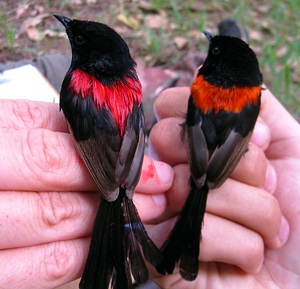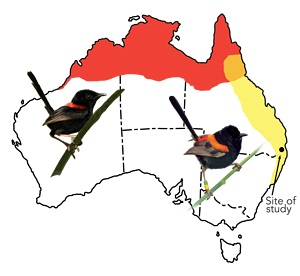Podcast: Play in new window
BOB HIRSHON (host):
Scarlet letter birds. I’m Bob Hirshon and this is Science Update.

Australian Red-backed Fairywrens form long-term pair bonds to raise families. But both sexes also sneak off to mate with their neighbors, according to Cornell behavioral ecologist Dan Baldassarre.
DAN BALDASSARRE (Cornell University):
And so if you do genetic testing, sort of like a Jerry Springer paternity test type of situation, you find out that a lot of those offspring are coming from males other than the dad who’s there taking care of them.
HIRSHON:
Baldassarre says males of the species come in two varieties, bright red and flame orange. But lately, red birds have been observed in areas previously occupied only by orange birds. So he and his team used art markers to artificially turn orange males red. They found that females were much more likely to cheat with red males than oranges ones. The researchers are now trying to figure out what makes red males so irresistibly sexy. I’m Bob Hirshon, for AAAS, the science society.


 Podcast for 25 October 2013
Podcast for 25 October 2013